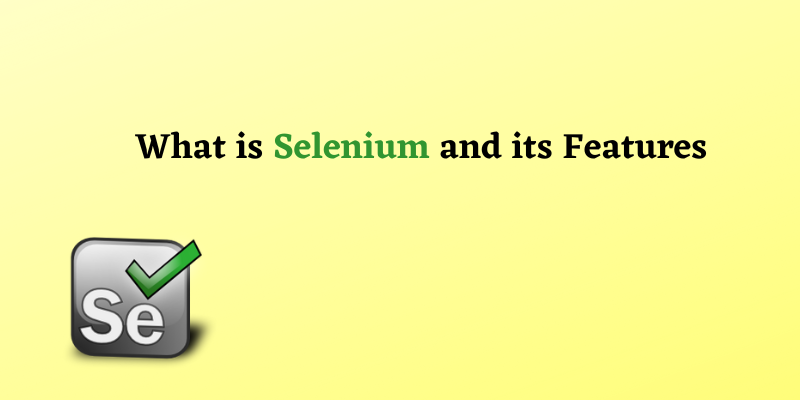Selenium is a free and open-source web application testing framework for web applications across several browsers and platforms. It is comparable to HP QuickTest Pro (QTP, now UFT). Selenium, on the other hand, concentrates on automating web-based applications. If you want to know What is Selenium and its Features, Join Selenium Training in Chennai at FITA Academy with course certification and placement training, which helps to enhance your career.
Features of Selenium:
Selenium has features where it’s more beneficial for the testers. Some of the essential components of Selenium are listed below.
Multi-Browser Support:
Selenium can interact with web elements and apps in a browser exactly as a real user would. Selenium accomplishes this without intermediary hardware or software by employing native support built into the browser to make direct calls. Selenium supports Chrome, Safari, IE, Opera, Edge, Firefox, and nearly all other browsers.
Multi-Language Compatibility:
Nearly all programming languages, including PHP, Java, Python, JavaScript, Perl, Ruby, etc., are supported by Selenium. You can use any programming language you are familiar with to create automation test scripts. You can also employ switch statements, conditional statements, or decision-making statements to improve your automation test script. Your test script will become versatile after completing this stage.
Easy Identification and Use of Web Elements:
Selenium’s numerous locators make locating and identifying web elements in web apps simple. This makes the test automation suite’s implementation of the features simpler. You can add different Selenium IDE extensions to your website.
Performance and Quickness:
Selenium offers a component called WebDriver that automates web app testing. This tool can test cases faster than the other tools. It can communicate directly with the browser, eliminating the need for intermediaries such as the server.
Enroll in Selenium Training Online, where the learners can learn Selenium basics to advance at their flexible time.
Dynamic Web Features:
Selenium can handle dynamic web elements with ease. It accomplishes this through the use of some of the following methods:
Contains(): A partial text can be used to find an element.
Absolute XPath(): This XPath can easily handle dynamic web components. It has a comprehensive set of pathways for web UI automation, beginning with the root node.
StartsWith(): This function aids in discovering an attached attribute to a dynamic web element by matching or locating the beginning text.
Classes and Methods for Selenium WebDrivers:
Selenium WebDriver is a helpful tool provided by Selenium. It offers numerous answers to address potential issues in automation testing. It also assists testers in dealing with complicated web elements such as radio buttons, dropdowns, alarms, and so on by leveraging dynamic locators.
Conclusion:
This blog has helped you gather information about Selenium’s features. Join Selenium Course in Bangalore to learn more about Selenium, which will help you to develop your career by providing certification training with real-time projects.
